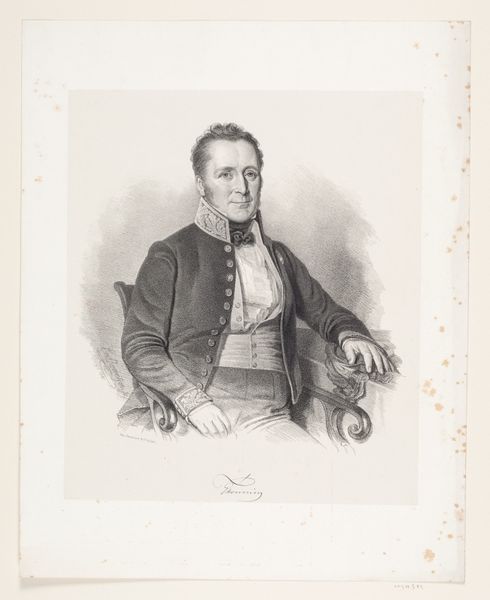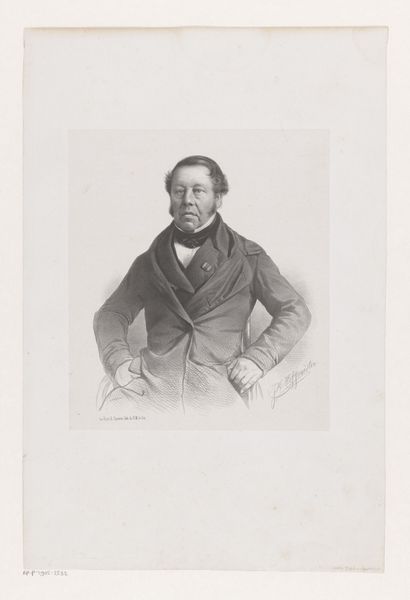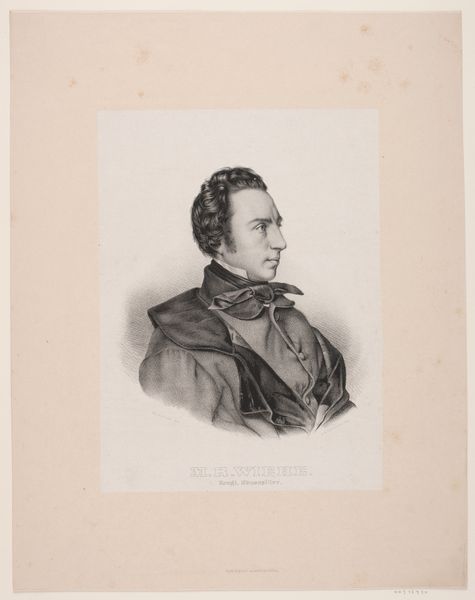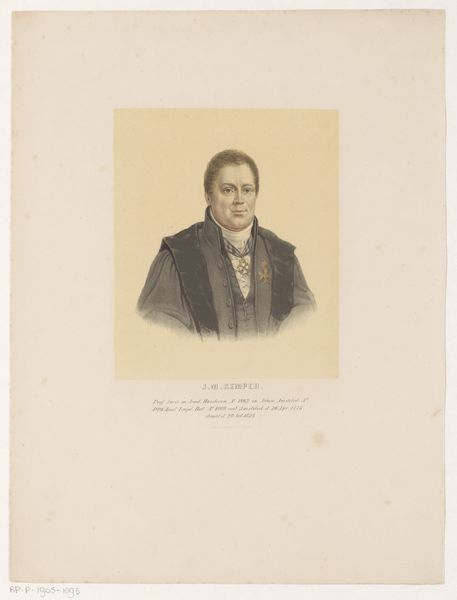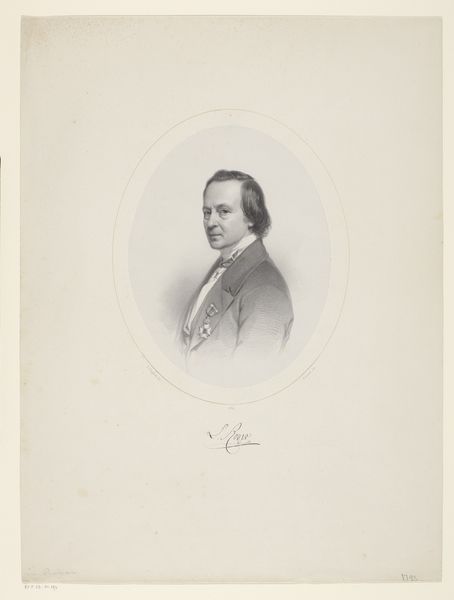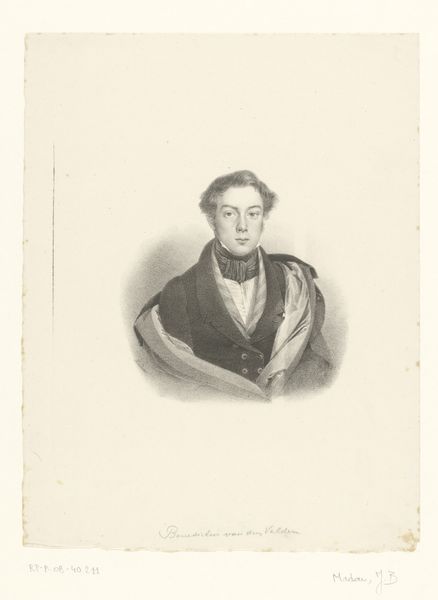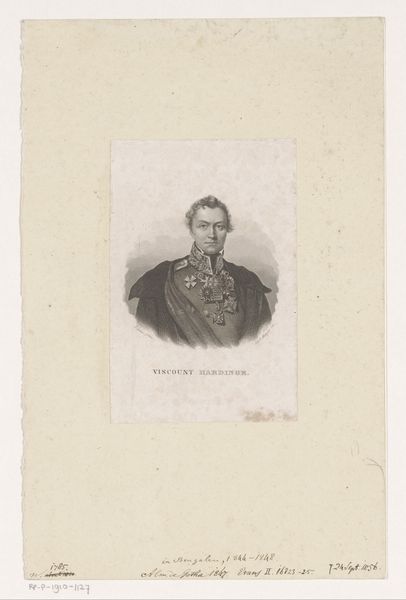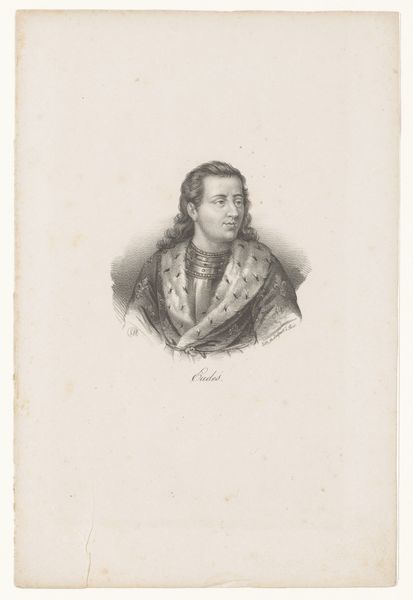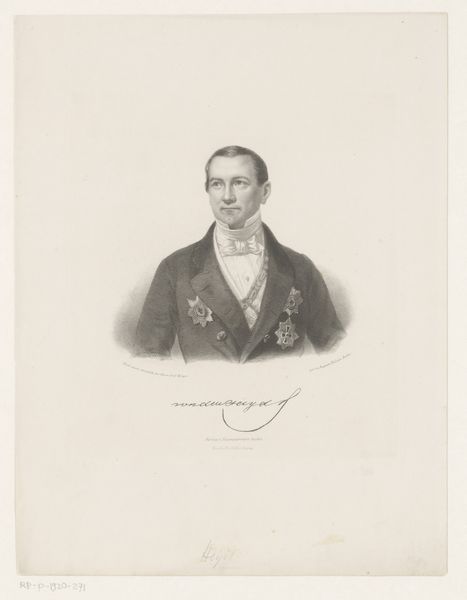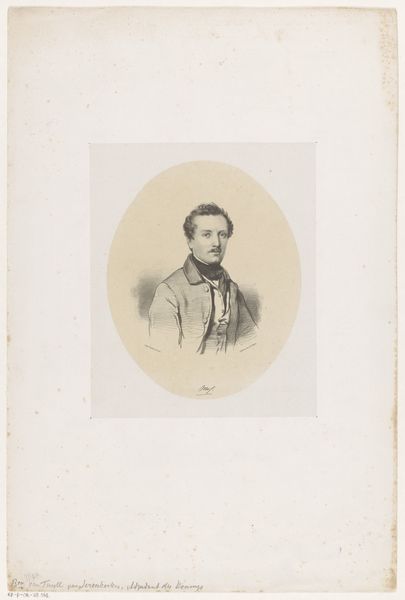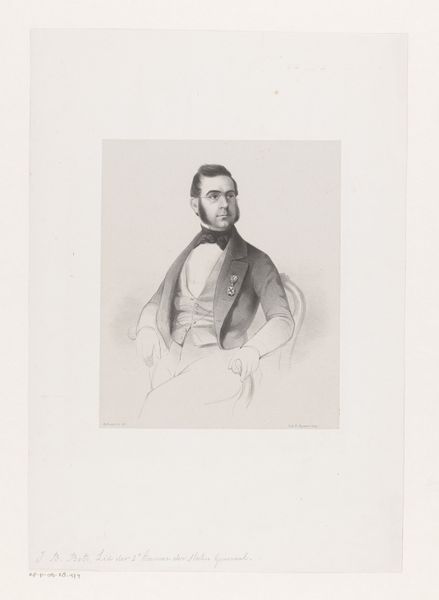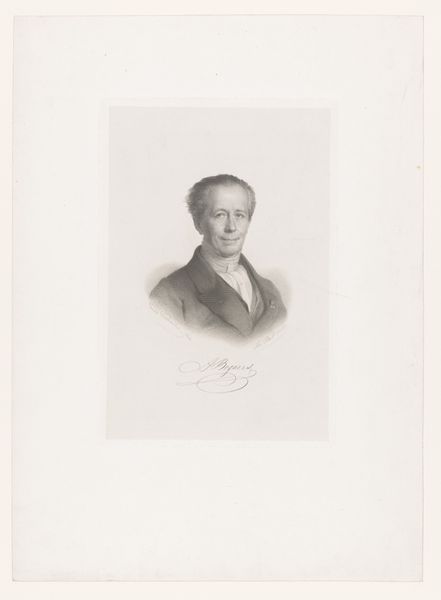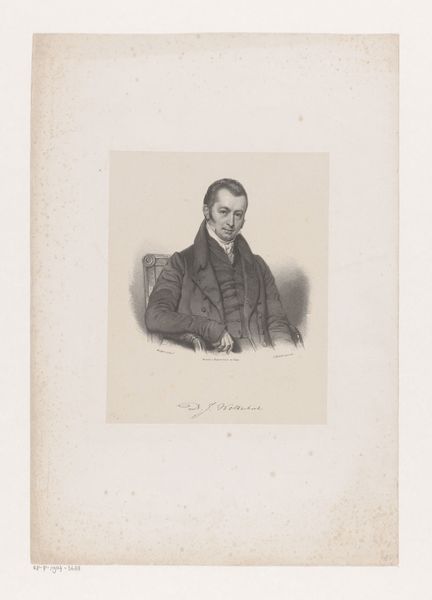
engraving
#
portrait
#
pencil drawn
#
pencil sketch
#
historical photography
#
portrait reference
#
academic-art
#
engraving
Dimensions: height 320 mm, width 240 mm
Copyright: Rijks Museum: Open Domain
Curator: This is an engraving titled "Portret van juridisch student R. Fervier," or "Portrait of Law Student R. Fervier," created in 1847 by Tiemen Hooiberg. Editor: My first impression is that this work seems both detailed and subdued. The lines are fine, creating subtle shading and a serious mood. There’s a certain formality about the sitter's pose and attire that speaks to 19th-century portraiture. Curator: Absolutely, and it’s important to consider the context. Law students in the 19th century represented a rising professional class. A portrait such as this was often commissioned to project an image of respectability and intellectual prowess, key for career advancement and social mobility. The inclusion of his glasses is an explicit marker of his engagement with the life of the mind. Editor: Agreed. If we delve deeper into the formal elements, the engraving employs hatching and cross-hatching to create depth, which is remarkable considering the limitations of the medium. Notice how the artist captures the textures of his jacket, vest and the delicate rendering of light on his face? Curator: I am also curious about how this piece reflects broader discussions around access to legal professions at the time. Was Fervier from a family with established social connections? What challenges might he have faced in entering such a field? These questions inform our understanding of his individual ambition as well as the broader societal norms he was navigating. It's interesting that Fervier is grasping what looks like gloves in his left hand, and a finger points upward suggesting aspiration, as much as an aloofness, considering his otherwise well put-together outward appearance. Editor: I appreciate your emphasis on these socio-historical narratives. Viewing this from a purely formal standpoint, I am reminded that such portraits reinforced established modes of representation, visually asserting hierarchy. Yet, at the same time, as you rightly say, it signifies potential upward mobility, a promise latent within the figure himself. Curator: Precisely. What seems like a traditional portrait becomes far more complex when considered alongside the social dynamics of its time. Editor: A rewarding discussion that reveals the depth present in this seemingly simple 19th-century portrait.
Comments
No comments
Be the first to comment and join the conversation on the ultimate creative platform.
